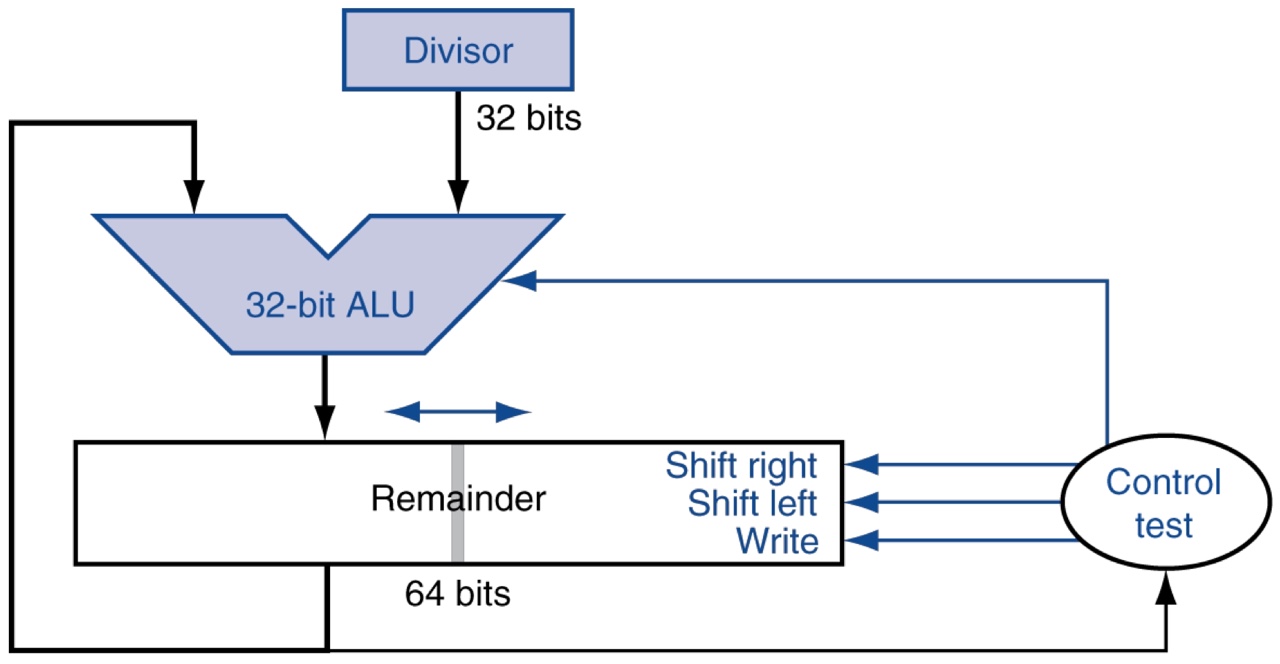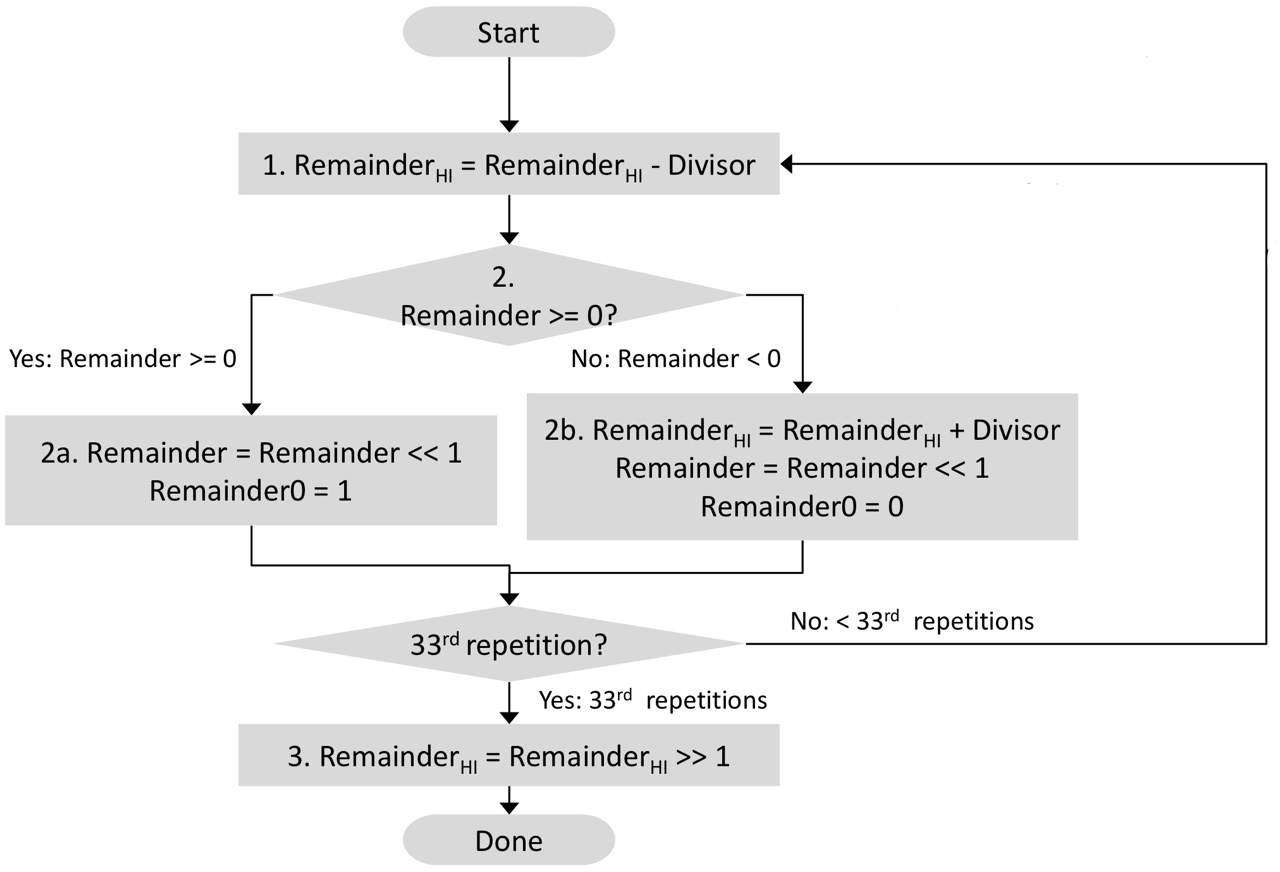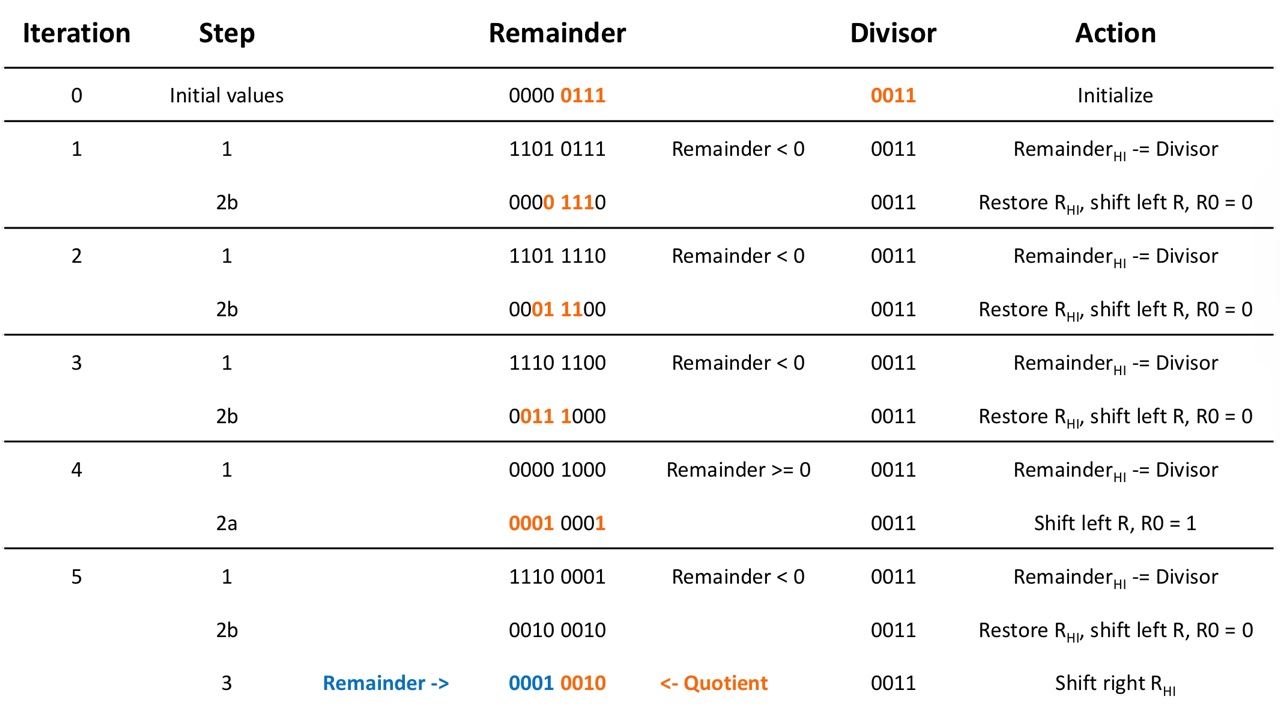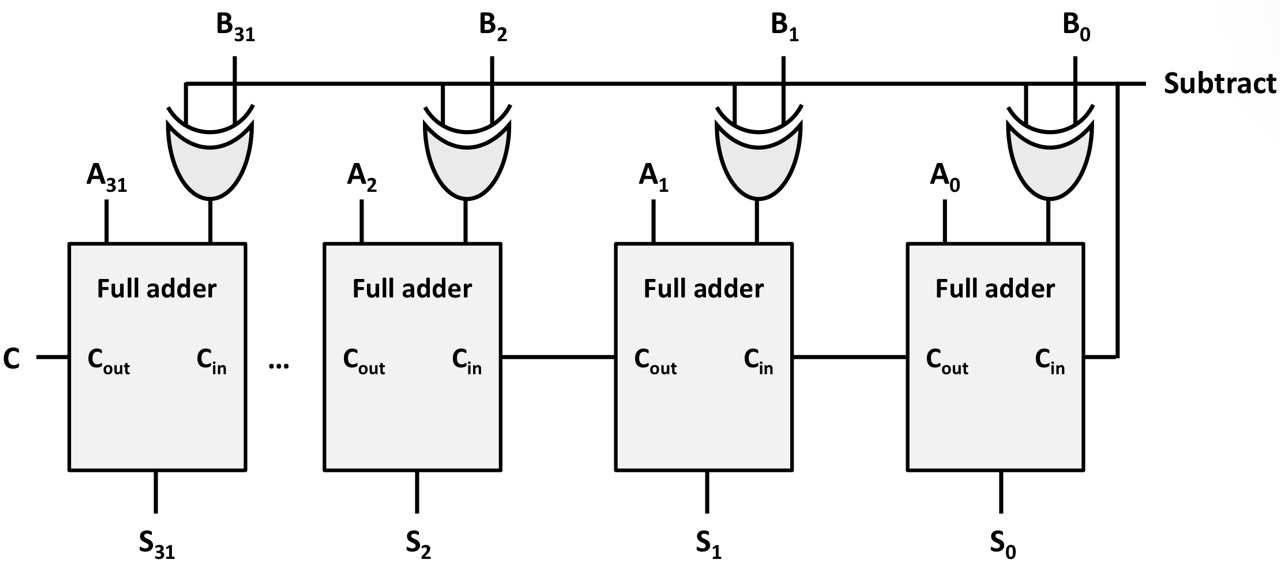contents: 0-1. CA Intro
Division
If the length of Dividend and Divisor is M and N,
the length of Quotient M - N + 1 & the length of Remainder N
- In MIPS-based computers, 32 bits are used to represent both Dividend and Divisor. Therefore, the length of both Quotient and Remainder 32
Optimized version of the division HW
-
32-bit divisor register / ALU
-
64-bit remainder register (dividend and quotient shares a register with remainder)
- HI: Remainder
- LO: Quotient

Settings
-
0 is stored in the left half of the Remainder register
-
The value of dividend is loaded into the right half of the Remainder register
-
The value of divisor is loaded into the Divisor register
Division Algorithm

Example
When N = 4 (4-bit ALU / divisor, 8-bit product),
- should be repeated as many bits + 1 as it is

Signed division
Do division after converting both divisor & dividend to positives
After the division
-
Negate the quotient only if the signs of the divisor and dividend are different
-
Remainder's sign follows Dividend's sign
Instructions
div rs, rt / divu rs, rt: do$rs/$st
- The result (remainder and quotient) is stored in HI / LO
- No overflow or divide-by-0 checking

Example:
-
Initially, the value in
$t0(dividend) is loaded into theLOregister -
Initially,
$t(divisor) is used as the divisor register -
Then, do the division and store the remainder and quotient to
HIandLOregisters
Summary: Design for arithmetic operations
Addition & Subtraction
Use the same HW for addition and subtraction
-
32-bit parallel adder
-
Additional XOR operators + subtract bit

Multiplication & Division
Use the same optimized HW for Multiplication and Division
-
A single 32-bit register for multiplicand and divisor
-
A single 32-bit
ALU -
HIandLOregisters for the results of multiplication and division
